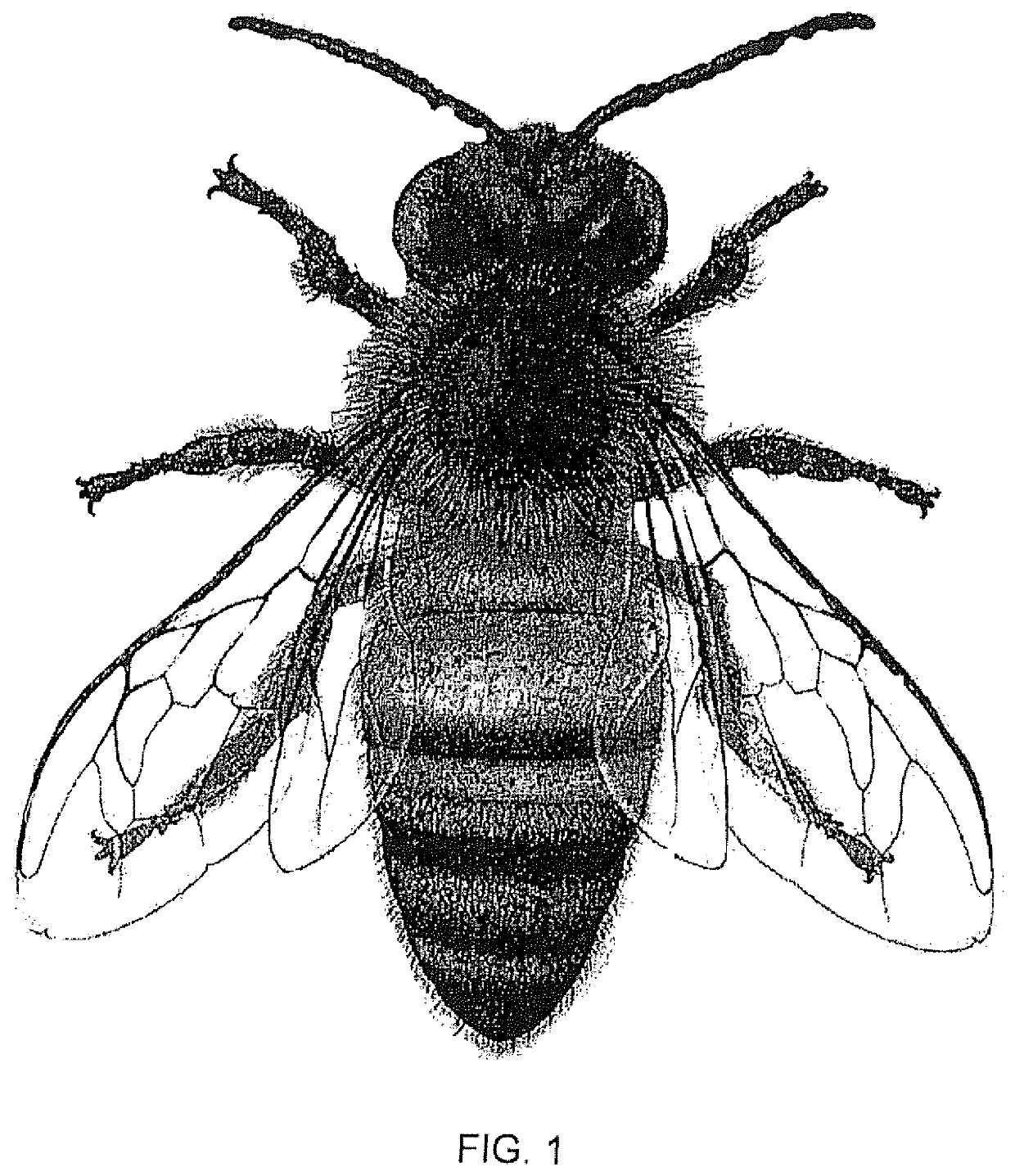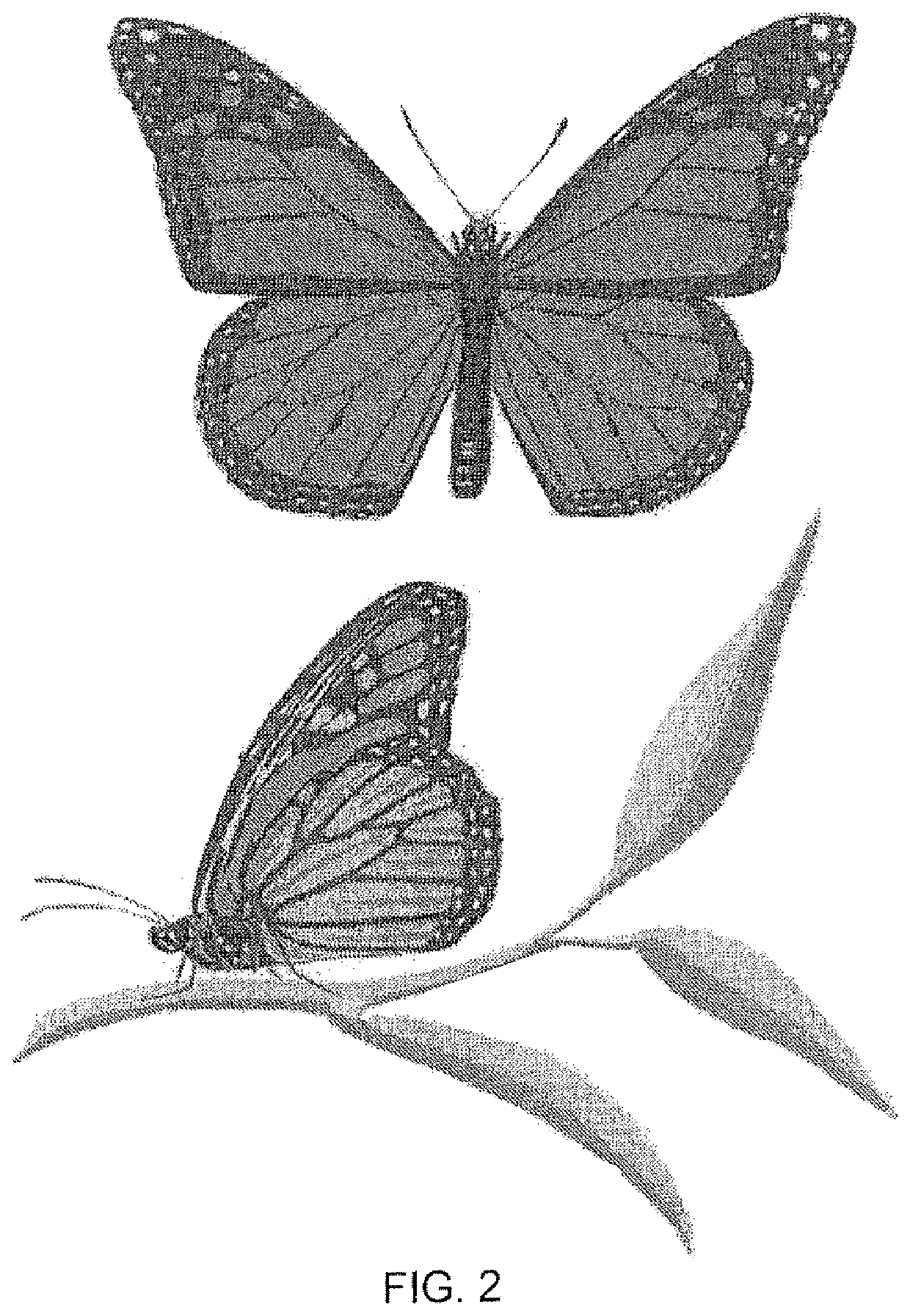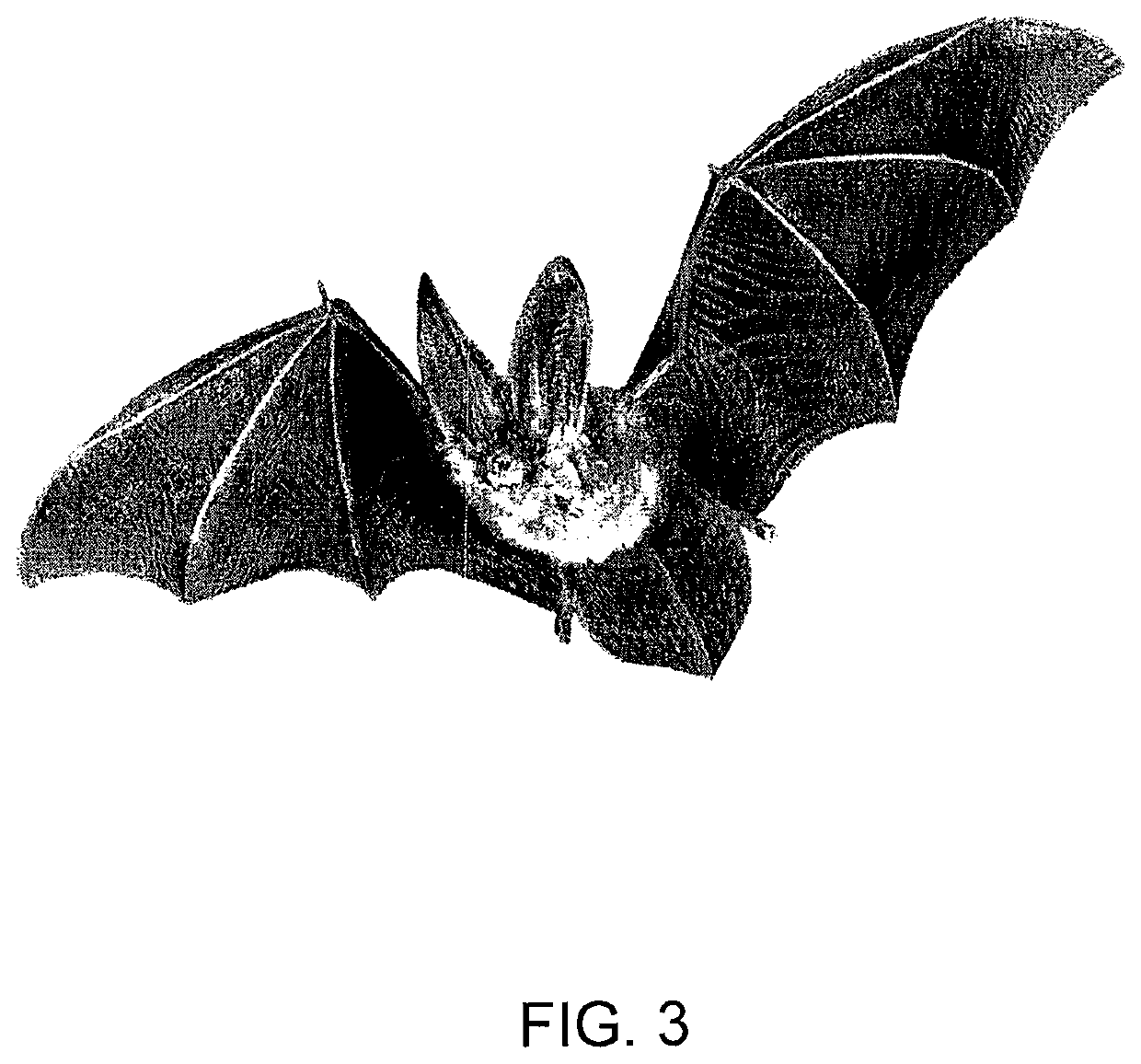Method and system for protecting honey bees from fipronil pesticides
a technology of fipronil and pesticide, applied in the field of honey bee treatment, can solve the problems of threatening the stability of our ecosystems and agricultural landscapes, the loss of extreme colonies, and the population of several pollinators, so as to achieve precise gene and genome manipulation, and the repertoire of biological functions.
- Summary
- Abstract
- Description
- Claims
- Application Information
AI Technical Summary
Benefits of technology
Problems solved by technology
Method used
Image
Examples
Embodiment Construction
[0068]Impacts to honey bees from sublethal exposure to imidacloprid in the presence of other stressors have been evaluated in laboratory studies and suggest that pesticides, such as imidacloprid, in combination with pathogens may impact colony health and immune function in honey bees. It is believed that several neonicotinoid insecticides are implicated in the decline of honey bee populations, including the following: imidacloprid. clothianidin, thiamethoxam, and dinotefuran.
[0069]To provide necessary and sufficient written disclosure and enablement of the various embodiments of the present invention, the following references are incorporated by reference in their entireties: 20110269119 to Hutchinson, et al.; 20130064796 to Hamdi; 20140212520 to Del Vecchio, et al.; U.S. Pat. No. 9,017,718 to Tan; 20140065218 to Lang et al.; U.S. Pat. Nos. 6,599,883; 8,383,201; 5,158,789; 20070218114 to Sorousch; 20040136923 to Davidson; U.S. Pat. No. 8,999,372 to Davidson; 20090196907 to Bunick; 2...
PUM
| Property | Measurement | Unit |
|---|---|---|
| stability | aaaaa | aaaaa |
| body size | aaaaa | aaaaa |
| structure | aaaaa | aaaaa |
Abstract
Description
Claims
Application Information
 Login to View More
Login to View More - R&D
- Intellectual Property
- Life Sciences
- Materials
- Tech Scout
- Unparalleled Data Quality
- Higher Quality Content
- 60% Fewer Hallucinations
Browse by: Latest US Patents, China's latest patents, Technical Efficacy Thesaurus, Application Domain, Technology Topic, Popular Technical Reports.
© 2025 PatSnap. All rights reserved.Legal|Privacy policy|Modern Slavery Act Transparency Statement|Sitemap|About US| Contact US: help@patsnap.com



